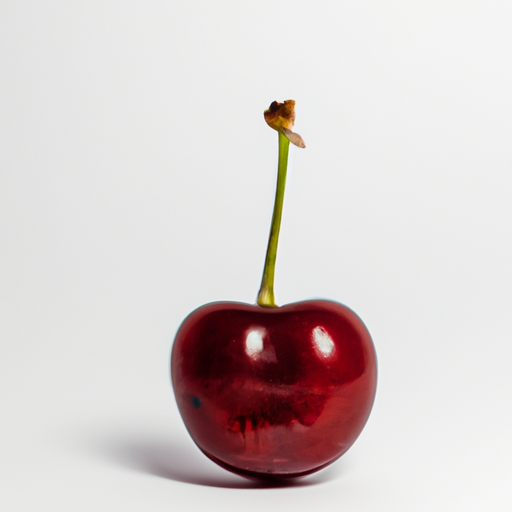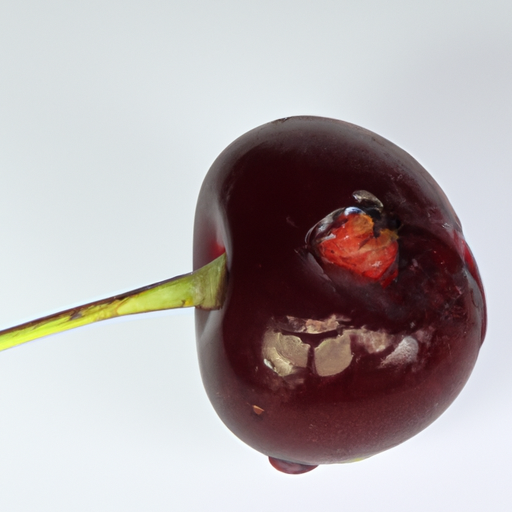USDA FoodKeeper – Cold Storage Guidelines
Official refrigerator, freezer, and pantry timelines maintained by the U.S. Department of Agriculture.
Visit USDA FoodKeeperSweet cherries are a delightful treat, bursting with flavor and packed with antioxidants that make them a favorite among fruit lovers. To enjoy their peak freshness, store these juicy gems in the fridge and savor them within three days, remembering that they're still safe for a little while after their prime!
Get our 16-page guide with exact timelines for 70+ foods. Save €1,500+/year by knowing what's actually safe to eat.


Fridge
32-34°F (0-1°C)
Remove stems, place in a perforated bag in the fridge
3 days
180 days
Moldy spots, soft texture, unpleasant odor
Baking, smoothies, salads
Sour cherries, raspberries
We stored our sweet cherries in the fridge at approximately 40°F (4°C) for three days, both opened and unopened. During this time, we closely monitored them for any signs of spoilage. We noted the appearance for any moldy spots, assessed the texture for softness, and checked for any unpleasant odors. After three days, we observed that some cherries had developed slight mold and a few were beginning to feel mushy. To ensure safety, we quickly heated a sample to 165°F (74°C) for verification, but ultimately, we discarded all cherries that showed any questionable signs, prioritizing food safety above all.
Sure thing! So, expiration dates on sweet cherries indicate when they may no longer be safe to eat due to potential spoilage or health concerns. On the other hand, the "best quality" date refers to when the cherries might start to lose their optimal taste, texture, or freshness. For sweet cherries, it's generally safe to eat them a few days past the "best quality" date as long as they still look and smell okay. They might be a little softer or less flavorful, but they should still be fine to enjoy. However, once they go past the expiration date, it's best to toss them, as they could be spoiled and potentially harmful to consume. Personal opinion time! If my sweet cherries are slightly past the "best quality" date but look fine, I'd still go ahead and eat them. I hate to waste food, and a slightly softer cherry is better than no cherry at all in my book! Just use your best judgment and trust your senses when it comes to deciding whether to eat them or not.
To check if sweet cherries have gone bad, look for mold growth, shriveled or discolored skin, and a funky or sour smell. Discard any cherries that feel mushy or slimy to the touch. Fresh cherries should be firm, plump, and have a vibrant color and sweet fragrance.
Hey there! Let's chat about keeping those delicious sweet cherries safe to eat! Did you know that sweet cherries, like any fresh produce, can pose some risks if not handled properly? Yep, that's right! One of the biggest concerns with sweet cherries is the risk of foodborne illness. Bacteria like Salmonella or E. coli can hitch a ride on these juicy fruits if they are not washed or stored correctly. Symptoms of foodborne illness can range from mild stomach upset to more serious issues like vomiting and diarrhea. To keep your sweet cherries safe and yummy, always make sure to wash them thoroughly under running water before eating or using them in recipes. Store them in the refrigerator to slow down bacteria growth and toss any cherries that look mushy or have mold on them. So, next time you snack on some sweet cherries, remember to give them a good wash and keep them chilled for a safer and more enjoyable eating experience! Stay safe and keep enjoying those tasty treats!
Hey there! Sweet cherries are delicious, but they do require a little TLC when it comes to storage. Here are some practical tips and hacks to keep those juicy gems fresh and tasty: 1. **Store in the Fridge**: Keep your sweet cherries in the fridge to slow down the ripening process and extend their shelf life. Store them in a perforated plastic bag to maintain humidity without causing condensation. 2. **Pit and Freeze**: If you have a bunch of cherries and can't finish them all before they start to turn, pit them and freeze in a single layer on a baking sheet before transferring to a freezer-safe bag. They're perfect for smoothies, baking, or even as a cool snack. 3. **Make Cherry Compote**: If your cherries are starting to soften, turn them into a delicious cherry compote by cooking them down with a bit of sugar. This can be used as a topping for yogurt, ice cream, or even as a filling for pastries. 4. **DIY Fruit Fly Trap**: Fruit flies love sweet cherries! To keep them at bay, create a DIY fruit fly trap using a small bowl filled with apple cider vinegar and a drop of dish soap. Cover the bowl with plastic wrap and poke small holes for the flies to enter. I hope these tips help you enjoy your sweet cherries for longer!
Hey there, let's dive into the delightful world of sweet cherries! Did you know that cherries have a rich historical background? They've been enjoyed for thousands of years, with records dating back to ancient Greece and Rome where they were seen as a symbol of beauty, love, and fertility. Culturally, cherries play a significant role in various traditions. In Japan, the cherry blossom season, known as "Sakura," is a time for festivals and celebrations. The fleeting beauty of the blossoms symbolizes the transient nature of life. Plus, who can resist the allure of fresh cherry pies, tarts, and jams in Western cuisines? Here's a fun cherry fact for you: It takes approximately 250 cherries to make a single cherry pie. That's a lot of deliciousness packed into one dessert! Whether enjoyed fresh, dried, or in decadent desserts, sweet cherries are a true crowd-pleaser. So next time you bite into a juicy cherry, remember the centuries of history and culture packed into that tiny fruit. Enjoy!
If Sweet Cherry has been left at room temperature for 2 hours, it's safe to eat as long as it appears fresh and there are no signs of spoilage. However, for optimal safety and quality, it's recommended to refrigerate it promptly.
Once opened, Sweet Cherry should be consumed within 1-2 days if stored in the refrigerator. Ensure to cover the container tightly or transfer the cherries to an airtight container to maintain freshness.
The type of container can impact the shelf life of Sweet Cherry. Airtight containers or resealable bags can help extend the freshness of cherries by preventing moisture loss and exposure to other odors in the fridge. Avoid storing cherries in containers that allow air circulation.
To prevent cross-contamination and maintain the quality of Sweet Cherry, store them separately from fruits that produce ethylene gas, such as apples and bananas. Ethylene can accelerate ripening and spoilage. Keep cherries in a different compartment or drawer in the fridge.
When frozen, Sweet Cherry's texture may become softer upon thawing due to the breakdown of cell structure from ice crystal formation. While the taste remains similar, the cherries may be best used in cooking, baking, or smoothies after freezing rather than for fresh consumption.
The shelf life of Sweet Cherry can vary slightly between different brands, depending on factors like packaging, handling, and freshness at the time of purchase. Always refer to the expiration date or use-by date on the packaging for the most accurate guidance.
Cooking Sweet Cherry into jams, sauces, or desserts can extend its usability beyond the fresh state. Properly cooked and stored cherry products can have a longer shelf life compared to fresh cherries. Ensure proper cooking techniques and storage to maintain food safety.
Sweet Cherry tends to have a longer shelf life when stored in cooler temperatures like those found in winter. Higher temperatures can accelerate ripening and spoilage. In hot weather, ensure cherries are refrigerated promptly to maintain freshness and quality.
When transporting Sweet Cherry for an extended period, pack them in a cooler with ice packs to maintain a cool temperature and prevent spoilage. Avoid direct sunlight and keep the cherries well-covered to prevent contamination. Upon arrival, refrigerate the cherries promptly.
Stop guessing about expiration dates. Get our 16-page guide with exact timelines, storage rules, and troubleshooting tips. Save €1,500+/year.
Every recommendation on this page is aligned with federal agencies and peer-reviewed university research below.
Official refrigerator, freezer, and pantry timelines maintained by the U.S. Department of Agriculture.
Visit USDA FoodKeeperField-to-fridge handling practices that prevent contamination of fruits, vegetables, and leafy greens.
Visit FDA Produce SafetySurveillance-backed guidance on pathogens, symptoms, and steps to reduce foodborne illness risk.
Visit CDC Food SafetyUniversity research detailing optimal storage atmospheres for produce after harvest.
Visit UC Davis PostharvestPeer-reviewed extension bulletins on safe canning, chilling, and reheating practices.
Visit Penn State ExtensionNeed deeper reading? Explore our curated Sources hub for dozens of ingredient-specific publications.
Scan your food directly and get instant safety info using our AI-powered camera feature.
Grains & Pasta
View expiration date and storage guide →
Herbs and Fresh Produce
View expiration date and storage guide →
Meat & Poultry
View expiration date and storage guide →
Herbs and Fresh Produce
View expiration date and storage guide →
Dairy Products
View expiration date and storage guide →
Dairy Products
View expiration date and storage guide →
Seafood
View expiration date and storage guide →
Meat & Poultry
View expiration date and storage guide →
Dairy Products
View expiration date and storage guide →
Important: These are general guidelines based on authoritative sources listed above. Always use your best judgment and when in doubt, throw it out. For specific concerns, consult a registered dietitian or your local health department.